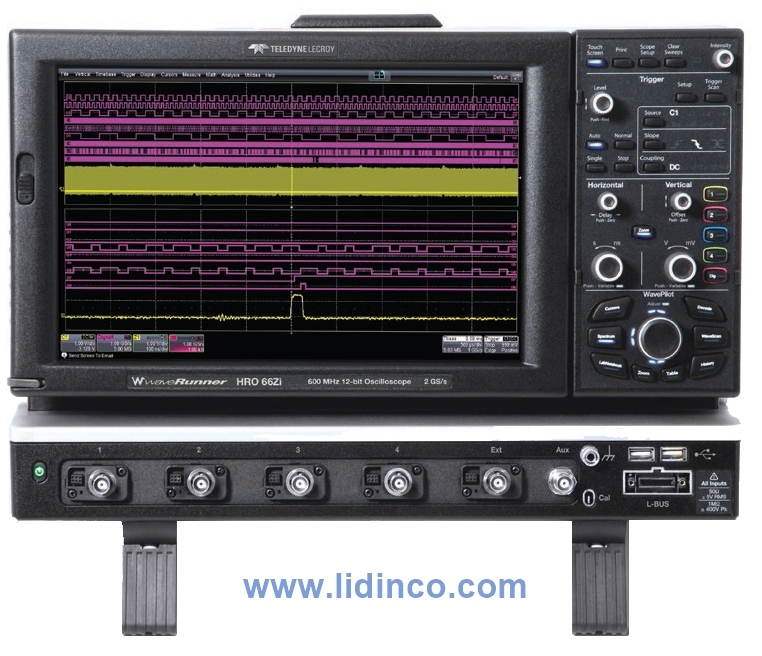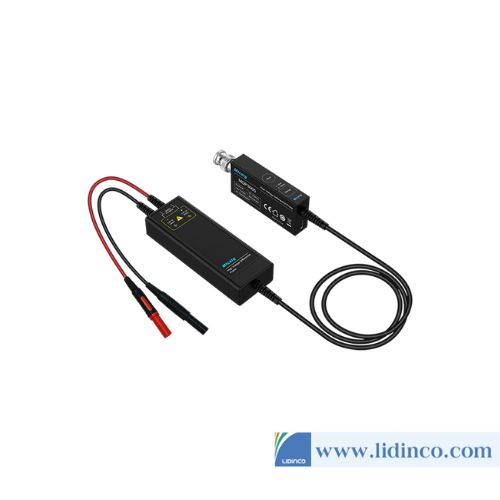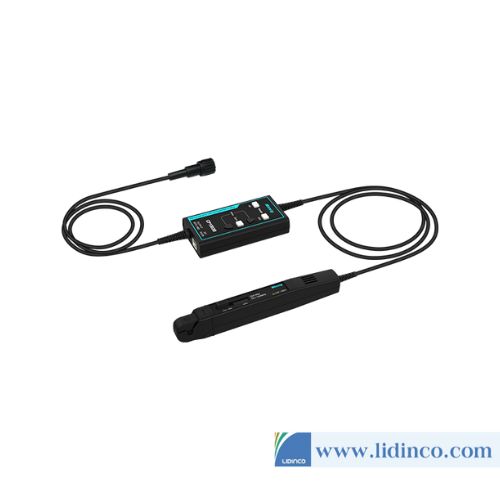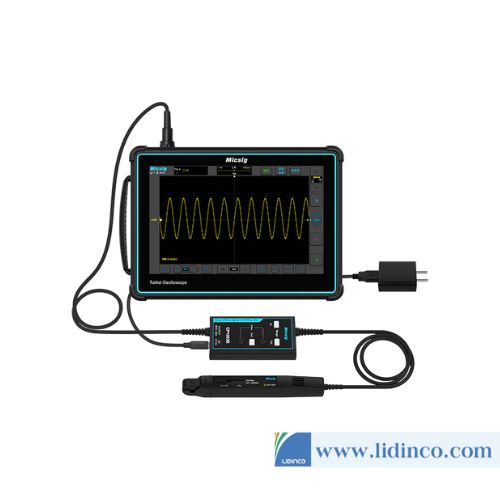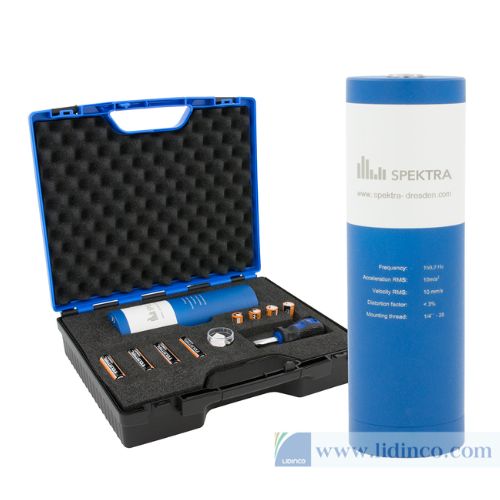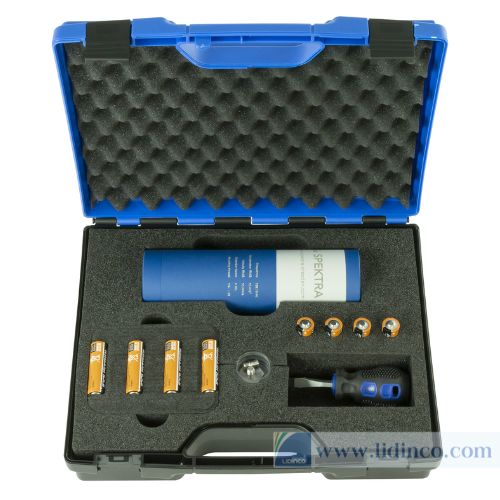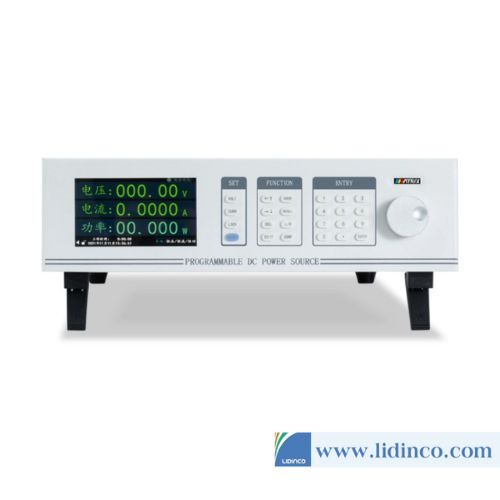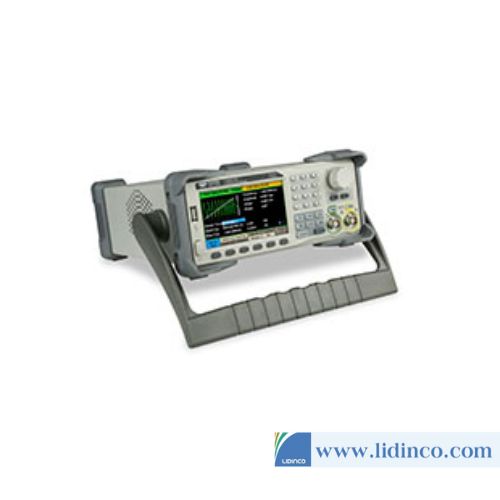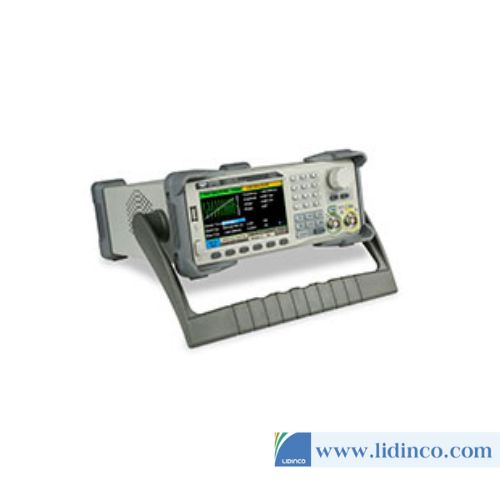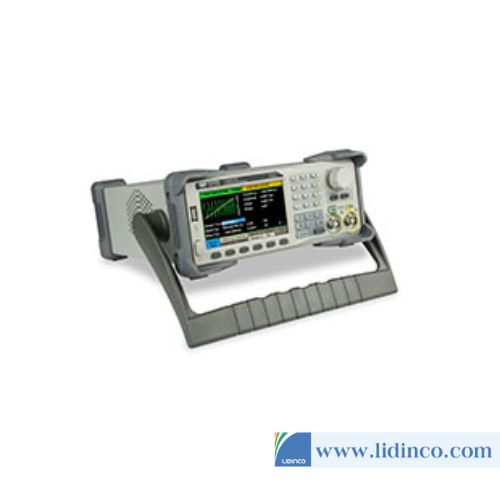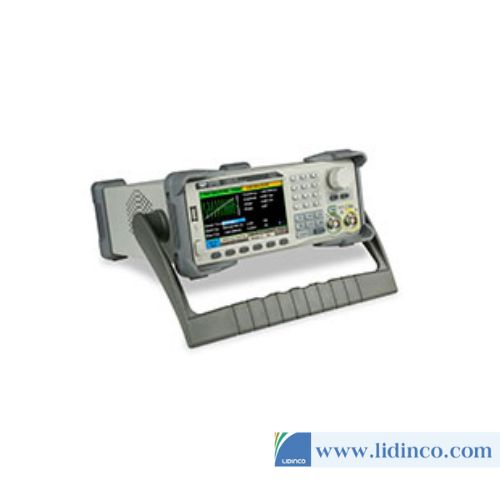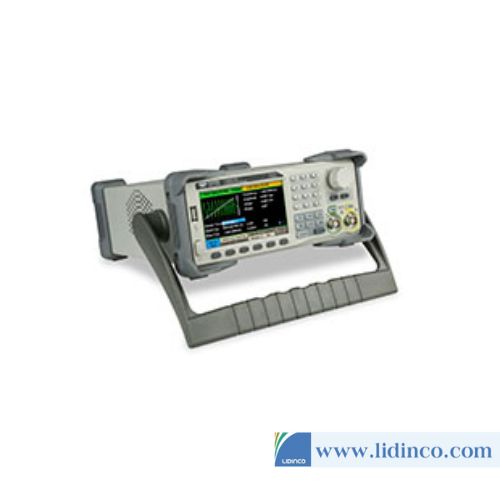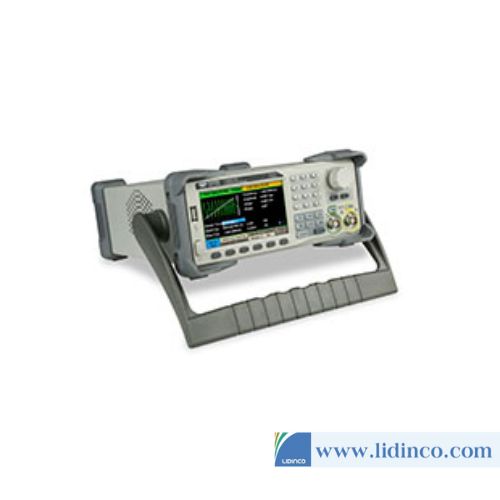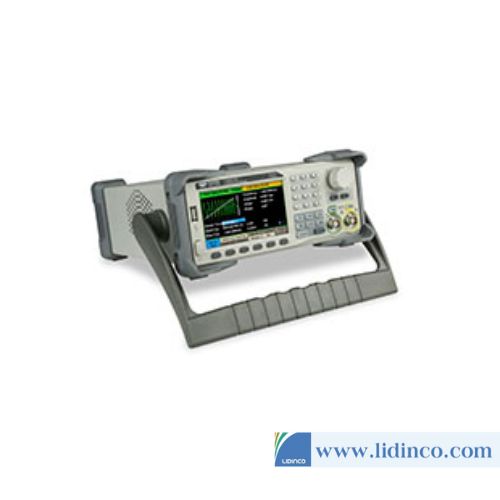Digital Oscilloscope LeCroy HRO 66Zi 600 MHz, 4 CH
Hotline: +84 906 988 447
Head Office: Ho Chi Minh City
- Tel: +84 2839 778 269 / 3601 6797
- Email: sales@lidinco.com
- Add: 487 Cong Hoa Street, Tan Binh Ward, Ho Chi Minh City, Vietnam
Office: Bac Ninh City
- Tel: +84 222 730 0180
- Email: bn@lidinco.com
- Add: 184 Binh Than Street, Vo Cuong Ward, Bac Ninh, Vietnam
-
 Technical Counseling
100% Free
Technical Counseling
100% Free
-
 Free Shipping
For 3.000.000vnd Order
Free Shipping
For 3.000.000vnd Order
Data is being updated
The world's clearest and lowest-noise Oscilloscopes are the new HRO models from Teledyne LeCroy. Teledyne LeCroy's High Resolution Oscilloscopes combine true 12-bit ADC's and newly designed low-noise front ends to deliver unmatched signal fidelity. From the crisp, ultra-thin traces to the blazing update speed and responsiveness, Teledyne LeCroy HRO models provide a shocking contrast to traditional 8-bit oscilloscopes.
Teledyne LeCroy HRO models contain a powerful feature set which includes a wide range of application packages, advanced triggering to isolate events, a user interface developed for quick and easy navigation, a wide range of probing options, and lightning-fast performance.
The Teledyne LeCroy HRO family features a pristine signal acquisition architecture that offers unmatched signal fidelity with low noise. This performance is augmented by a huge offset and timebase delay adjustment to allow easy signal and amplifier performance assessment and zooming on vertical and horizontal signal characteristics.
A New Way to Navigate and View
The WavePilot control area provides convenient control of Cursors, Decode, WaveScan, History, LabNotebook, and Spectrum by their respective function buttons on the front panel.
The SuperKnob is a joystick-like knob in the center of the WavePilot control area used to easily navigate through tables, zoom and position waveforms, and quickly document and annotate your setups.
Simply slide the button on the left side of the display and rotate upwards 90º. The display will automatically change from landscape to portrait mode. The display will also pivot upwards and downwards to optimize viewing angle.
More Trigger Capability Isolates More Problems More Quickly
A powerful combination of high bandwidth edge and 10 different SMART triggers, four stage cascade triggering, measurement trigger, and TriggerScan are all standard and allow you to isolate the problem quickly and begin focus on the cause. The measurement trigger offers a powerful option to qualify a trigger event based on a qualified measurement with great resolution.
Rotating Display
The 12.1" high resolution WXGA wide screen is designed to provide the best view of any signal type on the display.
The widescreen is ideal for a variety of signals where long records are required and zooming or scrolling results in a large block of data.
Rotate the screen 90° degrees to optimize the display for viewing digital signals, jitter tracks, eye diagrams, and frequency plots. The screen image will adjust automatically when rotated. Tilt the display up or down in either orientation to minimize reflections or glare.
Vertical System | |
| Bandwidth | 600 MHz |
| Analog Bandwidth (Max) | 600 MHz |
| Analog Bandwidth @ 50 Ω (-3 dB) (ProBus Input) | 600 MHz (≥1 mV/div) |
| Analog Bandwidth @ 1 MΩ (-3 dB) (ProBus Input) | 500 MHz (typical) |
| Rise Time (10-90%, 50 Ω) | 625 ps (typical) |
| Rise Time (20-80%, 50 Ω) | 435 ps (typical) |
| Input Channels | 4 |
| Bandwidth Limiters | 20MHz, 100 MHz, 200MHz, 350 MHz |
| Input Impedance | 50 Ω+/-2% or 1 MΩ||17pF, 10 MΩ || 17 pF with supplied Probe |
| Input Coupling | 1 MΩ: AC, DC, GND; 50 Ω: DC, GND |
| Maximum Input Voltage | 50 Ω: 5V RMS ± 10V peak 1 MΩ: 400 V max. (DC + peak AC < 10 kHz) |
| Channel-Channel Isolation | DC-400MHz > 1000:1; 400MHz up to rated BW > 300:1 |
| Vertical Resolution | 12 bits; up to 15 bits with enhanced resolution (ERES) |
| Sensitivity | 50 Ω: 1 mV-1 V/div, fully variable; 1 MΩ: 1 mV-10 V/div, fully variable |
| DC Gain Accuracy | ±(0.5%) F.S, offset at 0 V |
| DC Vertical Gain Accuracy (Gain Component of DC Accuracy) | ±(0.5%) F.S, offset at 0 V |
| Offset Range | 50 Ω: ±1.6 V @ 1 mV - 4.95 mV ±4 V @ 5mV - 9.9 mV ±8 V @ 10mV - 19.8 mV ±10 V @ 20mV - 1V 1 MΩ: ±1.6 V @ 1 mV - 4.95 mV ±4 V @ 5mV - 9.9 mV ±8 V @ 10mV - 19.8 mV ±16 V @ 20mV - 100 mV ±80 V @ 102mV - 198 mV ±160 V @ 200mV - 1V ±400V @ 1.02 V-10 V/div |
| Offset Accuracy | ±(1% of offset setting +0.2% of full scale + 0.02% max offset + 1 mV) |
| DC Vertical Offset Accuracy | ±(1% of offset setting + 0.2% F.S. + 0.02% max offset + 1 mV) |
Horizontal System | |
| Timebases | Internal timebase common to 4 input channels; an external clock may be applied at the auxiliary input |
| Time/Division Range | 20 ps/div - 12.8 ks/div with standard memory (up to 25.6 ks/div with -L memory, 51.2 ks/div with -XL memory) RIS available at ≤ 10 ns/div; Roll Mode available at ≥ 100 ms/div and ≤ 5 MS/s. |
| Clock Accuracy | <=1ppm +(aging of 0.5ppm/yr from last calibration) |
| Trigger and Interpolator Jitter | ≤ 5.5 ps RMS (typical) <0.1 ps RMS (typical, software assisted) |
| Channel-Channel Deskew Range | ±9 x time/div. setting, 100 ms max., each channel |
| External Timebase Reference (Input) | 10MHz +/-25ppm via Lbus BNC adaptor |
| External Timebase Reference (Output) | 10MHz, 3.5 dBm +/-1dBm, syncronized to reference being used (internal or external reference) via LBUS BNC adaptor |
| External Clock | DC to 100 MHz; (50 Ω/1 MΩ), EXT BNC input, Minimum rise time and amplitude requirements apply at low frequencies. |
Acquisition System | |
| Single-Shot Sample Rate/Ch | 2 GS/s on 4 Ch |
| Random Interleaved Sampling (RIS) | 100 GS/s for repetitive signals (20 ps/div to 10 ns/div) |
| Maximum Trigger Rate | 500,000 waveforms/second (in Sequence Mode, up to 4 channels) |
| Intersegment Time | 2 µs |
| Maximum Acquisition Memory | 256 Mpts (4 Ch operation) |
| Standard Memory (4 Ch / 2 Ch / 1Ch) (Number of Segments) | 64M / 64M / 64M (30,000) |
| Memory Options (4 Ch / 2 Ch / 1Ch) (Number of Segments) | L-128 Option: 128M / 128M / 128M (60,000) XL - 256 Option: 256M / 256M / 256M (65,000) |
Acquisition Processing | |
| Averaging | Summed averaging to 1 million sweeps; continuous averaging to 1 million sweeps |
| Enhanced Resolution (ERES) | From 12.5 to 15 bits vertical resolution |
| Envelope (Extrema) | Envelope, floor, or roof for up to 1 million sweeps |
| Interpolation | Linear or Sin x/x |
Triggering System | |
| Modes | Normal, Auto, Single, and Stop |
| Sources | Any input channel, Ext, Ext/10, or line; slope and level unique to each source (except line trigger) |
| Coupling Mode | DC, AC, HFRej, LFRej |
| Pre-trigger Delay | 0-100% of memory size (adjustable in 1% increments of 100 ns) |
| Post-trigger Delay | 0-10,000 divisions in real time mode, limited at slower time/div settings or in roll mode |
| Hold-off by Time or Events | From 2 ns up to 20 s or from 1 to 99,999,999 events |
| Internal Trigger Range | ±4.1 div from center (typical) |
| Trigger Sensitivity with Edge Trigger ProBus Inputs | 2 div @ < 600 MHz .5 div @< 300 MHz 1 div @ < 200 MHz 0.9 div @<10 MHz (DC, AC, and LFRej coupling, ≥ 10 mV/div, 50 Ω) |
| External Trigger Sensitivity, (Edge Trigger) | 2 div @ < full Bandwidth 1.5 div @ < 300 MHz 1 div @ <200 MHz 0.9 div @<10 MHz (DC, AC, and LFRej coupling) |
| Max. Trigger Frequency, SMART Trigger | 600 MHz @ ≥ 10 mV/div (minimum triggerable width 1.2 ns) |
| External Trigger Input Range | Ext (±0.4 V); Ext/10 (±4 V) |
Basic Triggers | |
| Edge | Triggers when signal meets slope (positive, negative, or either) and level condition. |
| Window | Triggers when signal exits a window defined by adjustable thresholds |
| TV-Composite Video | Triggers NTSC or PAL with selectable line and field; HDTV (720p, 1080i, 1080p) with selectable frame rate (50 or 60 Hz) and Line; or CUSTOM with selectable Fields (1-8), Lines (up to 2000), Frame Rates (25, 30, 50, or 60 Hz), Interlacing (1:1, 2:1, 4:1, 8:1), or Synch Pulse Slope (Positive or Negative). |
SMART Triggers | |
| State or Edge Qualified | Triggers on any input source only if a defined state or edge occurred on another input source. Delay between sources is selectable by time or events. |
| Qualified First | In Sequence acquisition mode, triggers repeatably on event B only if a defined pattern, state, or edge (event A) is satisfied in the first segment of the acquisition. Holdoff between sources is selectable by time or events. |
| Dropout | Triggers if signal drops out for longer than selected time between 1 ns and 20 s. |
| Pattern | Logic combination (AND, NAND, OR, NOR) of 5 inputs (4 channels and external trigger input). Each source can be high, low, or don?t care. The High and Low level can be selected independently. Triggers at start or end of the pattern. |
SMART Triggers with Exclusion Technology | |
| Glitch | Triggers on positive or negative glitches with selectable widths. minimum width 1.5ns, Maximum Width: 20s |
| Width (Signal or Pattern) | Triggers on positive or negative glitches with selectable widths. minimum width 1.5ns, Maximum Width: 20s |
| Interval (Signal or Pattern) | Triggers on intervals selectable between 1 ns and 20 s. |
| Timeout (State/Edge Qualified) | Triggers on any source if a given state (or transition edge) has occurred on another source. Delay between sources is 1 ns to 20 s, or 1 to 99,999,999 events. |
| Runt | Trigger on positive or negative runts defined by two voltage limits and two time limits. Select between 1 ns and 20 ns. |
| Slew Rate | Trigger on edge rates. Select limits for dV, dt, and slope. Select edge limits between 1 ns and 20 ns. |
| Exclusion Triggering | Trigger on intermittent faults by specifying the expected behavior and triggering when that condition is not met |
Cascade (Sequence) Triggering | |
| Capability | Arm on "A" event, then Trigger on "B" event. Or Arm on "A" event, then Qualify on "B" event, and Trigger on "C" event. |
| Types | Cascade A then B: Edge, Window, Pattern (Logic) Width, Glitch, Interval, Dropout, or Measurement. Measurement can be on Stage B only. Cascade A then B then C (Measurement): Edge, Window, Pattern (Logic), Width, Glitch, Interval, Dropout, or Measurement. Measurement can be on Stage C only. Cascade A then B then C: Edge, Window, Pattern (Logic) |
| Holdoff | Holdoff between A and B or B and C is selectable by time (1ns to 20s) or number of events. Measurement trigger selection as the last stage in a Cascade precludes a holdoff setting between the prior stage and the last stage. |
Low Speed Serial Protocol Triggering (Optional) | |
| Optionally available | I2C, SPI (SPI, SSPI, SIOP), UART-RS232, CAN, LIN, FlexRay, MIL-STD-1553, USB 1.x/2.0, AudioBus |
Measurement Trigger | |
| Measurement Trigger Capability | Select from a large number of measurement parameters trigger on a measurement value with qualified limits. Can be used as only trigger or last event in a Cascade Trigger. |
Color Waveform Display | |
| Type | Color 12.1" widescreen flat panel TFT-Active Matrix with high resolution touch screen |
| Resolution | WXGA; 1280 x 800 pixels. |
| Number of traces | Display a maximum of 16 traces. Simultaneously display channel, zoom, memory and math traces. |
| Grid Styles | Auto, Single, Dual, Quad, Octal, X-Y, Single+X-Y, Dual+X-Y |
| Waveform Representation | Sample dots joined, or sample dots only |
Internal Waveform Memory | |
| Internal Waveform Memory | 4 active waveform memory traces (M1-M4) store 16 bit/point full length waveforms. Waveforms can be stored to any number of files limited only by the data storage media capacity. |
Integrated Second Display | |
| Type | Supports touch screen integration of user-supplied second display with split-grid capability. |
| Resolution | (Note: touch screen driver for second display may not be a Fujitsu driver) |
LeCroy WaveStream™ Fast Viewing Mode | |
| Intensity | 256 Intensity Levels, 1-100% adjustable via front panel control |
| Types | Select analog or color-graded |
| Number of Channels | up to 4 simultaneously |
| Max Sampling Rate | 2 GS/s |
| Persistence Aging | Select from 500 ms to Infinity |
| Waveforms/second (continuous) | up to 2500 Waveforms/second |
| Operation | Front panel toggle between WaveStream ON (Analog), ON (Color) and OFF |
Analog Persistence Display | |
| Analog and Color-Graded Persistence | Variable saturation levels; stores each trace?s persistence data in memory |
| Persistence Types | Select analog, color, or three-dimensional |
| Trace Selection | Activate persistence on all or any combination of traces |
| Persistence Aging | Select from 500 ms to infinity |
| Sweep Display Modes | All accumulated, or all accumulated with last trace highlighted |
Processor/CPU | |
| Type | Intel Core i5, 2.5 GHz (or better) |
| Processor Memory | 4 GB standard |
| Operating System | Microsoft Windows® 7 Pro 64 bit Embedded |
| Real Time Clock | Date and time displayed with waveform in hardcopy files. SNTP support to synchronize to precision internal clocks. |
Zoom Expansion Traces | |
| Zoom Expansion Traces | Display up to 8 Zoom and 8 Math/Zoom traces |
Setup Storage | |
| Front Panel and Instrument Status | Store to the internal hard drive, over the network, or to a USB-connected peripheral device. |
Interface | |
| Remote Control | Via Windows Automation, or via LeCroy Remote Command Set |
| Network Communication Standard | VXI-11 or VICP, LXI Class C (v1.2) Compliant |
| GPIB Port | Supports IEEE - 488.2 (External) |
| Ethernet Port | Supports 2 10/100/1000BaseT Ethernet interface (RJ45 ports) |
| USB Ports | Minimum 6 total (incl. 2 front panel) USB 2.0 ports support Windows compatible devices |
| USB Device Port | 1 USBTMC port |
| External Monitor Port | 15 pin D-Type WXGA compatible DB-15 to support customer-supplied external monitor. Includes support for extended desktop operation with WXGA resolution on second monitor. |
| Peripheral Bus | LeCroy LBUS standard |
Auxiliary Input | |
| Signal Types | Select External Trigger or External Clock Input on the front panel |
| Coupling | 50 Ω: DC; 1 MΩ: AC, DC, GND |
| Max. Input Voltage | 50 Ω: 5 Vrms; 1 MΩ: 400 Vmax (DC + Peak AC ≤ 5 kHz) |
Auxiliary Output | |
| Signal Types | Select from control signals or Off |
| Output Signal | 500 Hz-1 MHz square wave or DC level; 50 mV-1 V into 1 MΩ |
| Control Signals | Trigger enabled, trigger out, pass/fail status, off |
| Connector Type | BNC, located on rear panel |
Automatic Setup | |
| Auto Setup | Automatically sets timebase, trigger, and sensitivity to display a wide range of repetitive signals |
| Find Vertical Scale | Automatically sets the vertical sensitivity and offset for the selected channel to display a waveform with the maximum dynamic range |
General | |
| Auto Calibration | Ensures specified DC and timing accuracy is maintained for 1 year minimum. |
Probes | |
| Probes | Qty. (4) ÷10 Passive Probes |
| Probe System | Probus. Automatically detects and supports a variety of compatible probes |
| Scale Factors | Automatically or manually selected depending on probe used |
| Calibration Output | Default is 1kHz square wave, 1Vp-p (typical), output to probe hook. Settable from 250 Hz to 1 MHz square wave; 50 mV to 1.0V. |
Power Requirements | |
| Voltage | 100-240 VAC ±10% at 45-66 Hz; 110-120 VAC ±10% at 380-420 Hz; Automatic AC Voltage Selection; Installation Category 300 V CAT II |
| Max. Power Consumption | 425 VA |
Environmental and Safety | |
| Temperature (Operating) | +5 °C to +40 °C |
| Temperature (Non-Operating) | -20 °C to +60 °C |
| Humidity (Operating) | 5% to 80% relative humidity (non-condensing) up to +31 °C. Upper limit derates to 50% relative humidity (non-condensing) at +40 °C. |
| Humidity (Non-Operating) | 5% to 95% relative humidity (non-condensing) as tested per MIL-PRF-28800F |
| Altitude (Operating) | Up to 10,000 ft. (3048 m) at or below +25 °C |
| Altitude (Non-Operating) | Up to 40,000 ft. (12,192 m) |
| Random Vibration (Operating) | 0.31 grms 5 Hz to 500 Hz, 15 minutes in each of three orthogonal axes |
| Random Vibration (Non-Operating) | 2.4 grms 5 Hz to 500 Hz, 15 minutes in each of three orthogonal axes |
| Functional Shock | 30 g peak, half sine, 11 ms pulse, 3 shocks (positive and negative) in each of three orthogonal axes, 18 shocks total |
Physical Dimensions | |
| Dimensions (HWD) | 11.69"H x 16.46"W x 8.94"D (297 x 418 x 227 mm) |
| Weight | 25.2 lbs. (11.43 kg) |
| Shipping Weight | 38.8 lbs. (17.6 kg) |
Accessories

-
Bandwidth:
-
Sampling Rate:
-
Waveform Length:
-
Channels:
Micsig TO1152 150MHz Tablet Oscilloscope

-
Frequency:
-
Sampling Rate:
-
Waveform Length:
-
Vertical Resolution:
Function / Arbitrary Waveform Generator Lecroy T3AFG500

-
Frequency:
-
Sampling Rate:
-
Waveform Length:
-
Vertical Resolution:
Function / Arbitrary Waveform Generator Lecroy T3AFG350

-
Frequency:
-
Sampling Rate:
-
Waveform Length:
-
Vertical Resolution:
Function / Arbitrary Waveform Generator Lecroy T3AFG200

-
Frequency:
-
Sampling Rate:
-
Waveform Length:
-
Vertical Resolution:
Function / Arbitrary Waveform Generator Lecroy T3AFG120

-
Frequency:
-
Sampling Rate:
-
Waveform Length:
-
Vertical Resolution:
Function / Arbitrary Waveform Generator Lecroy T3AFG80

-
Frequency:
-
Sampling Rate:
-
Waveform Length:
-
Vertical Resolution:
Function / Arbitrary Waveform Generator Lecroy T3AFG60

-
Frequency:
-
Sampling Rate:
-
Waveform Length:
-
Vertical Resolution:
Function / Arbitrary Waveform Generator Lecroy T3AFG30

-
Frequency:
-
Sampling Rate:
-
Waveform Length:
-
Vertical Resolution:
Function / Arbitrary Waveform Generator Lecroy T3AFG40
Please login to write review!

